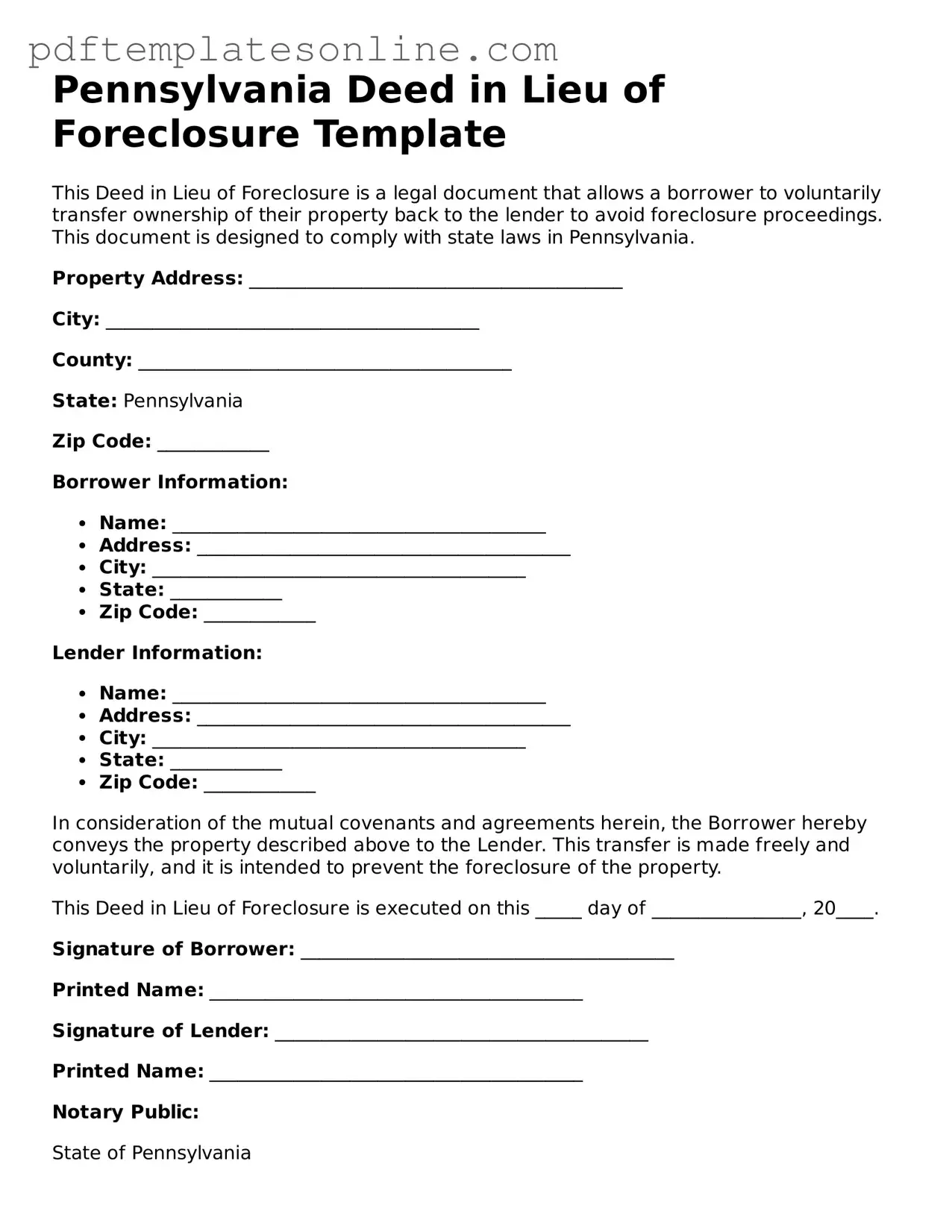When filling out the Pennsylvania Deed in Lieu of Foreclosure form, many individuals make common mistakes that can complicate the process. One frequent error is failing to provide accurate property information. Ensure that the property address, parcel number, and legal description are correct. Inaccuracies can lead to delays or even rejection of the deed.
Another mistake is neglecting to include all necessary signatures. Both the borrower and any co-owners must sign the document. If a signature is missing, the deed may not be legally binding. It’s essential to double-check that everyone involved has signed before submission.
Some individuals overlook the importance of consulting with a legal or financial advisor. While the form may seem straightforward, professional guidance can help you understand the implications of signing over your property. This step can prevent future regrets and ensure that you are making an informed decision.
Additionally, people often forget to attach required documents. Supporting documentation, such as a copy of the mortgage and any correspondence with the lender, should accompany the deed. Missing documents can lead to confusion and potential issues down the line.
Another common oversight is not properly notarizing the deed. In Pennsylvania, the deed must be notarized to be valid. Failing to have it notarized means the deed could be challenged in the future.
Many also underestimate the importance of understanding the tax implications. A deed in lieu of foreclosure can have tax consequences, including potential liability for income tax on any forgiven debt. It's wise to consult a tax professional to fully grasp these implications.
Finally, some people rush the process without reviewing the deed thoroughly. Take the time to read through the entire document. Mistakes in wording or omissions can lead to significant issues. A careful review can save you from unnecessary complications.
